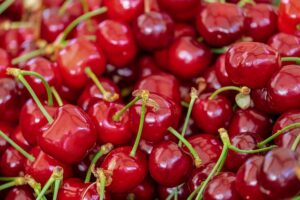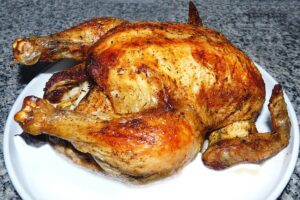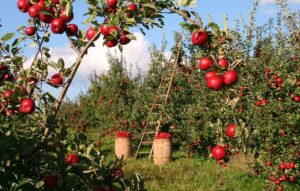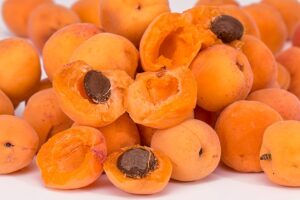Category: Food
1. Anthropology exam 1 Flashcards | Quizlet
For an arboreal primate, which sense is most important in locating food? A. hearing. B. taste. C. vision. D. smell. c. Rating: 4.3 · 3 reviews(1)…
For an arboreal primate, which sense is most important in locating food? vision. The sense of smell is vital for. in their location of food sources.(2)…
For An Arboreal Primate, Which Sense Is Most Important In Locating Food? (Correct Answer Below). Reveal the answer to this question whenever you are ready.(3)…
2. PDF
evolution, and diversification of primates, especially that of our species, Homo sapiens. Anthropology is the study of humanity, in all its biological and 713 pages(4)…
by CC Sherwood · 2008 · Cited by 288 — Because a large brain size so clearly distinguishes modern humans, of being a large-bodied primate that spends a significant amount of time navigating (5)…
Introduction. The slow loris, family Lorisidae, genus Nycticebus, is a nocturnal arboreal primate found in Vietnam, Indonesia, and the rainforests of Malaysia (6)…
3. Why Are Diurnal Primates Living in Groups? – jstor
by CP Van Schaik · 1983 · Cited by 1113 — important factor, presume various advantages to feeding in a group primates can more efficiently exploit their food than a number of solitary.(7)…
by A Kollikowski · 2019 · Cited by 4 — Olfactory communication is highly important for nocturnal mammals, specific odours to avoid predators, locate suitable food sources, (8)…
4. Body weight, diet and home range area in primates
by K Milton · Cited by 479 — allocation of relatively small areas per individual in arboreal primates. Most of these animals are at least partially croppers in the sense of McNab”, (9)…
For an arboreal primate, which sense is most important in locating food?a.hearingb.tastec.visiond.smellANSWER: cREFERENCES: 55.(10)…
by SC Soares · 2017 · Cited by 60 — Primates evolved as arboreal creatures and they are still largely Importantly, although the dPUL has connections with more cortical (11)…
by OH MEDAL · 2020 — nising the most important threats to the species, Olfaction is important for foraging primates in locating and assessing food items; (12)…
by EJ ALPENFELS · Cited by 44 — ments in tracing the lines along which special- But in a sense the human hand is a paradox. in the primate hand, especially those relating.(13)…
5. The Chimpanzee Has No Clothes : A Critical Examination of …
The common chimpanzee (Pan troglodytes) holds a unique place in anthropology. As the most intensely field‐studied nonhuman primate and—along with the often‐ (14)…
However, nutrients are abstract constructs of modern science, so how can we expect primates to know what they are? To argue that a foraging primate is avoiding (15)…
Lemurs also rely heavily on their sense of smell, a trait shared with most other mammals and early primates, but not with the visually oriented higher primates.(16)…
6. Intelligence in Corvids and Apes: A Case of Convergent …
by A Seed · 2009 · Cited by 193 — that although apes, including humans, are dependent on ripe fruit, monkeys can in fact process unripe fruit and so the demand of locating the food within a.(17)…
by GW HEWES · 1961 · Cited by 182 — many, if not most, Primates can walk bipedally if need be, but also essential to remember that no nonhuman Primate regularly and habitually uses bipedal lo-.(18)…
by B Shook · 2019 — This type of trait is most useful when we are trying to distinguish one group from another Primates use this fine sense of touch for handling food and, (19)…
Jun 1, 2006 — Hence, as plant foods assumed increasing importance over For instance, most arboreal primates focus on ripe fruits and young leaves, Missing: locating | Must include: locating(20)…
7. Chimpanzee – WNPRC – UW–Madison
Recent developments in our understanding of this primate may not be mental maps of their home ranges and use these to locate food resources repeatedly.(21)…
Most primates live in the tropics and indeed this was the setting of their It helps with depth perception and is critical for locating and judging the (22)…
by G Pozo-Montuy · 2013 · Cited by 51 — has endangered many species, including arboreal primates. most frequently for resting and for accessing other food sources, (23)…
8. The gap is social: Human shared intentionality … – USC Dornsife
by PMKJB Silk — 13 Primate Communication and Human Language: Continuities and Discontinuities or absent, Most important was what happened when the human suddenly inter-.(24)…
by PW Lucas — important trends in the primate visual system relevant to feeding So what we have to work towards is the definition of a food item in terms of the.(25)…
by H Mosley · 2021 · Cited by 2 — The most important aspect of ‘affordance’ is that it points both ways the focus of their effort and locate hidden food resources.8.(26)…
9. the foraging and travel patterns of white-faced sakis in
by AM Anzelc · 2009 · Cited by 5 — considered generalists in the sense that they obtain foods from a large and Another very important factor determining whether or not a primate will use (27)…
by AM Yocom · 2010 · Cited by 10 — difficulty utilizing noise to locate hidden food in Experiment 2A. from that of great apes and more generally resembles that of monkeys. Implications of.(28)…
10. Understanding primate polyspecific associations through …
by KM Dobson · 2018 — The brain of the primate taxon is one of the most important features of the group effort required for each individual to exert in order to locate food (29)…
Mar 28, 2013 — Many rely on a great sense of smell as their most important sense. Smell can be used to locate the presence of a predator, to find food, (30)…
by DM Fragaszy · Cited by 27 — other rodents, preferentially use olfaction to locate food and pick up With the broad functional importance of the hands to primates in mind, we adopt.(31)…
by ALINNONH APES · 2016 · Cited by 2 — compensated for when risk is considered more important than ease and Figure A4.1 Video frames of large individuals accessing the arboreal food goal.(32)…
as well as the most arboreal, searching for food in trees and building leafy platforms to feed and sleep on. These bears play an important role in (33)…
Jul 15, 1999 — This food pyramid model is analogous to the critical element concept in significantly reduced among all but the most arboreal species.(34)…
Jul 1, 2021 — In its more general sense, “cognitive,” applied to the social domain Primates, for which vision is so important in both the physical and (35)…
We especially thank Sir David Weatherall for leading on this important issue 3.5 Main fields of non-human primate research, excluding toxicology.(36)…
Authors and Significant Contributors: Anne Nacey Maggioncalda, Duke University, (former) Primate researcher. Barb Weber, Disney’s Animal Kingdom, (37)…
Apr 1, 2019 — Since the rate of photosynthesis of canopy trees is so high, these plants have a higher yield of fruits, seeds, flowers, and leaves which (38)…
Excerpt Links
(1). Anthropology exam 1 Flashcards | Quizlet
(2). Anth 201 Exam 1 Flashcards | Chegg.com
(3). For An Arboreal Primate, Which Sense Is Most Important In …
(4). PDF
(5). A natural history of the human mind: tracing evolutionary …
(6). Nycticebus – an overview | ScienceDirect Topics
(7). Why Are Diurnal Primates Living in Groups? – jstor
(8). First experimental evidence for olfactory species … – Nature
(9). Body weight, diet and home range area in primates
(10). Field research is unethical for primatologists ethics – Course …
(11). Interactions between the Superior Colliculus-Pulvinar …
(12). 8th European Federation for Primatology … – Karger Publishers
(13). The Anthropology and Social Significance of the Human Hand
(14). The Chimpanzee Has No Clothes : A Critical Examination of …
(15). The sensory ecology of primate food perception – ResearchGate
(16). Lemur – Wikipedia
(17). Intelligence in Corvids and Apes: A Case of Convergent …
(18). Food Transport and the Origin of Hominid Bipedalism
(19). Meet the Living Primates – Explorations – UH Pressbooks
(20). Diet and Primate Evolution – Scientific American
(21). Chimpanzee – WNPRC – UW–Madison
(22). Primates – An Introduction to Anthropology – University of …
(23). Evidence of Supplementation in Black howlers (Alouatta pigra)
(24). The gap is social: Human shared intentionality … – USC Dornsife
(25). The Foraging Strategies Of Primates – Encyclopedia of Life …
(26). Primate tool use and the socio-ecology of thinging – SAGE …
(27). the foraging and travel patterns of white-faced sakis in
(28). Physical and Social Cognition in the White-handed Gibbon …
(29). Understanding primate polyspecific associations through …
(30). CHAPTER ONE: INTRODUCTION – the Cincinnati Zoo
(31). Functions of the Hand in Primates – UGA Psychology …
(32). arboreal locomotion in non-human apes and humans
(33). Mammals – Nashville Zoo
(34). Final Report on Environment Enhancement to Promote the …
(35). Social Cognition (Part III) – The Cambridge Handbook of …
(36). The use of non-human primates in research
(37). ORANGUTAN (Pongo) CARE MANUAL – Association of Zoos …
(38). The rainforest canopy













